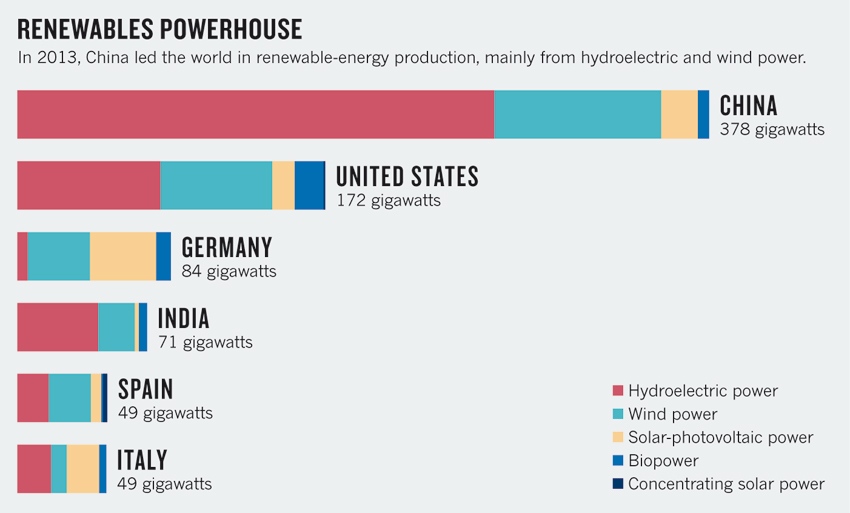Photo credit: The Danish Wind Industry Association (cc)
China has been the world’s largest consumer of energy since 2009 when the country surpassed the US. The majority of the energy which is produced and consumed in China comes from dirty fossil fuels. According to numbers from the International Energy Agency (IEA), about 78 percent of the total electricity generated in China between 2004 and 2010 came from coal. In 2007 China surpassed the US – yet again – and became the world’s largest greenhouse gas polluter. It’s worth pointing out though that China’s per capita emission numbers still lags behind those of more developed countries. However, this has obviously caused massive negative effects for the global climate, the local environment and Chinese people’s health.
To combat this, China is investing heavily in more sustainable and cleaner energy sources. And they have done so for several years now. The country invested a total of $56.3 billion on wind, solar and other renewable projects in 2013. That year, China invested more on renewables than all of Europe combined and became the world leader in renewable energy investments. Last year China became a powerhouse for solar and wind as the country’s investments in renewable energy increased by 32 percent, to $89.5 billion.

Unfortunately not everything is renewable energy as China has plans to triple its nuclear power capacity by 2020. And more than a third of the world’s nuclear reactors currently under construction can be found in China. But nuclear energy can’t seem to catch up with the deployment speed of renewable energy sources. Not even in China.
Last year, China’s nuclear capacity reached 20,000 megawatts. But at the same time China added 23,000 megawatts of new wind energy capacity – a world record. Chinese wind power now has an amazing cumulative capacity of 115,000 megawatts. While Beijing plans that nuclear energy will generate 50,000 megawatts by 2020, analysts expects that the country’s wind power capacity will then have already reached 200,000 megawatts.
To put things into perspective: wind power alone is now capable of powering more than 110 million homes in China. And if we only look at capacity, Chinese wind power now produce more energy than all of the nuclear power plants in the US.
Renewable energy sources are being deployed much faster and on a bigger scale. And for the foreseeable future, nuclear energy is unlikely to match wind power in China. Despite this, coal remains king in China. But the energy landscape is changing ever so rapidly. And according to official data from China’s National Bureau of Statistics, coal dropped nearly 3 percent in 2014.
All of this is encouraging. Particularly as new IEA data shows that global CO2 emissions stalled in 2014 while the economy actually grew. This marked the first time in four decades that the world economy grows while carbon emissions don't. Experts say that this change is likely due to an increasing worldwide deployment of renewable energy – and especially, a changing energy landscape in China.


Recommended Comments
Join the conversation
You can post now and register later. If you have an account, sign in now to post with your account.